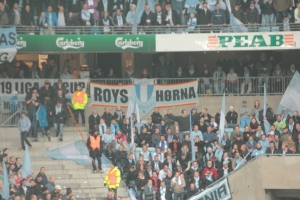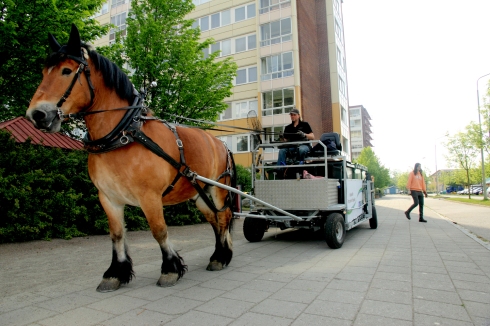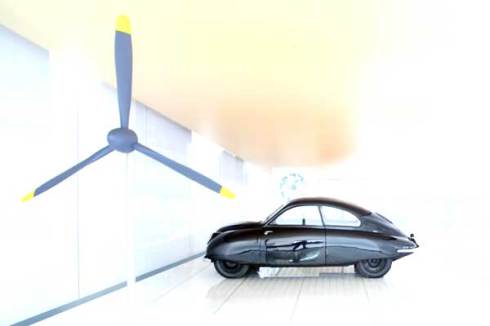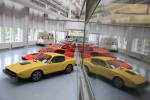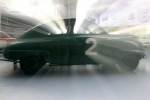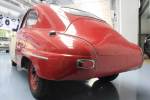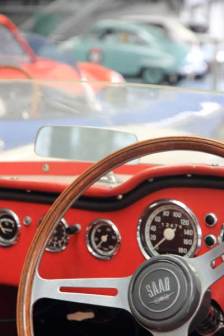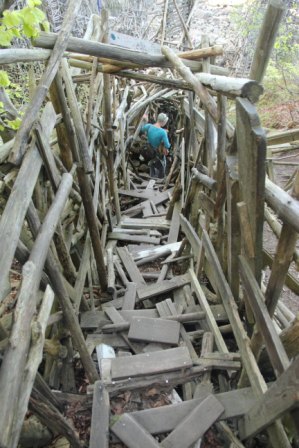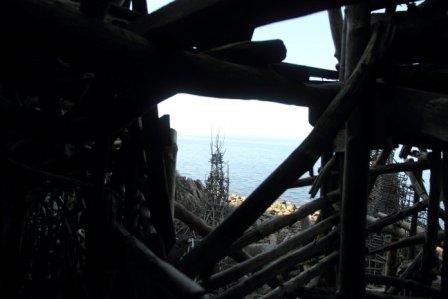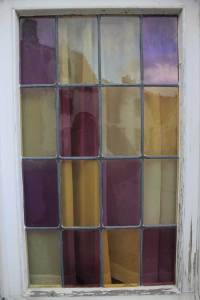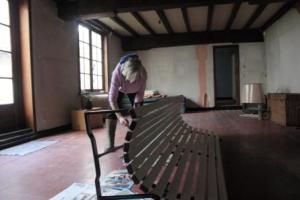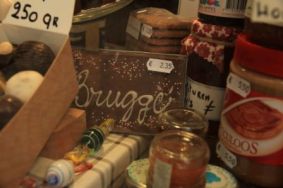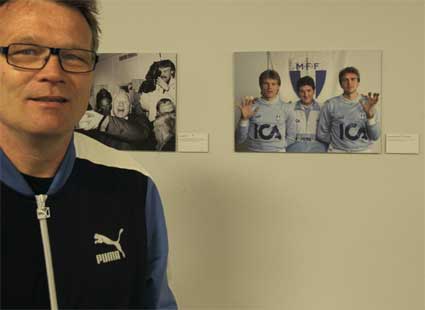Unbelievable. We’re in Sweden, it’s the night of the Sweden vs England game and come kick-off Jo still has her head under the duvet recording links! I did the chivalrous thing, of course, and went into town to bag us a seat. This was a little more difficult than you’d imagine. My first choice venue – an outdoor big screen where I knew there’d be lots of atmosphere – was operating a one-out, one-in policy by the time I got there, and while there are lots of Irish bars in Stockholm, the whole point was to see the game with some Swedes.
Our previous football outing here was a more organised affair. We had seats in the press area to watch Malmö FF (5 times league champions under our very own Roy Hodgson, hence Roy’s corner in the pic) which meant no queuing, tea, coffee and a rather pretty cupcake with the team emblem! Strange though it may sound, we were in fact working – shadowing Jiloan Hamad, Malmö midfielder (in Zlatan’s old position) and captain of Sweden’s U21 team.
Jiloan was lined up to show us around the mean streets of Malmö for an audio slideshow like the ones we did in Zambia. He performed admirably on the pitch that day – assisting in two of the three goals that saw off arch-rivals Helsinborg; and was eloquent and patient while making the slideshow.
One of the places on the itinerary was Rosengård – where Zlatan grew up. We arrived early so Jo could record an interview with a women’s group (Zaina, in the slideshow wearing a scarf in Swedish colours, is a member) and I went for a wander. All was as expected – high rises and hurrying residents – until I spotted a horse. Yes, a horse. Not just any horse, but the one used for collecting the rubbish on the estate.
Twice a week Dobbin is hitched to a special trailer and taken to collect the bins. No noise, no emissions (other than ones that can be cleared up with a shovel) and considerable delight for the kids who live in the big blocks all around.
Its handlers told me its not the only horsepower scheme in Malmö. There’s another rubbish operation and a big lawn-mowing scheme – which is how it all started. “It’s much better than coming here with a machine,” said one of the dustmen. “People are interested in the horse, and they interact with us.” They also operate a horse-drawn litter patrol in conjunction with local schools.
So that is why the slideshow includes a picture of a man, by an ‘orse, with a glint in his eye.
As for the football, I eventually found a screen – and a seat – at the surprisingly swish Bistrot Boheme. Jo arrived just as Sweden went 2-1 ahead (cue delirium from the Sverige fans) and then I had to sit on my hands as Walcott and Wellbeck turned woe into a win. Jo felt sorry for Sweden. I didn’t.
I have a hunch that down in Malmö, they won’t be that surprised by the result. And let’s hope Roy’s boys do better against Ukraine than Jiloan’s U21 side – they were beaten 6-0 in Kiev a couple of weeks ago.

